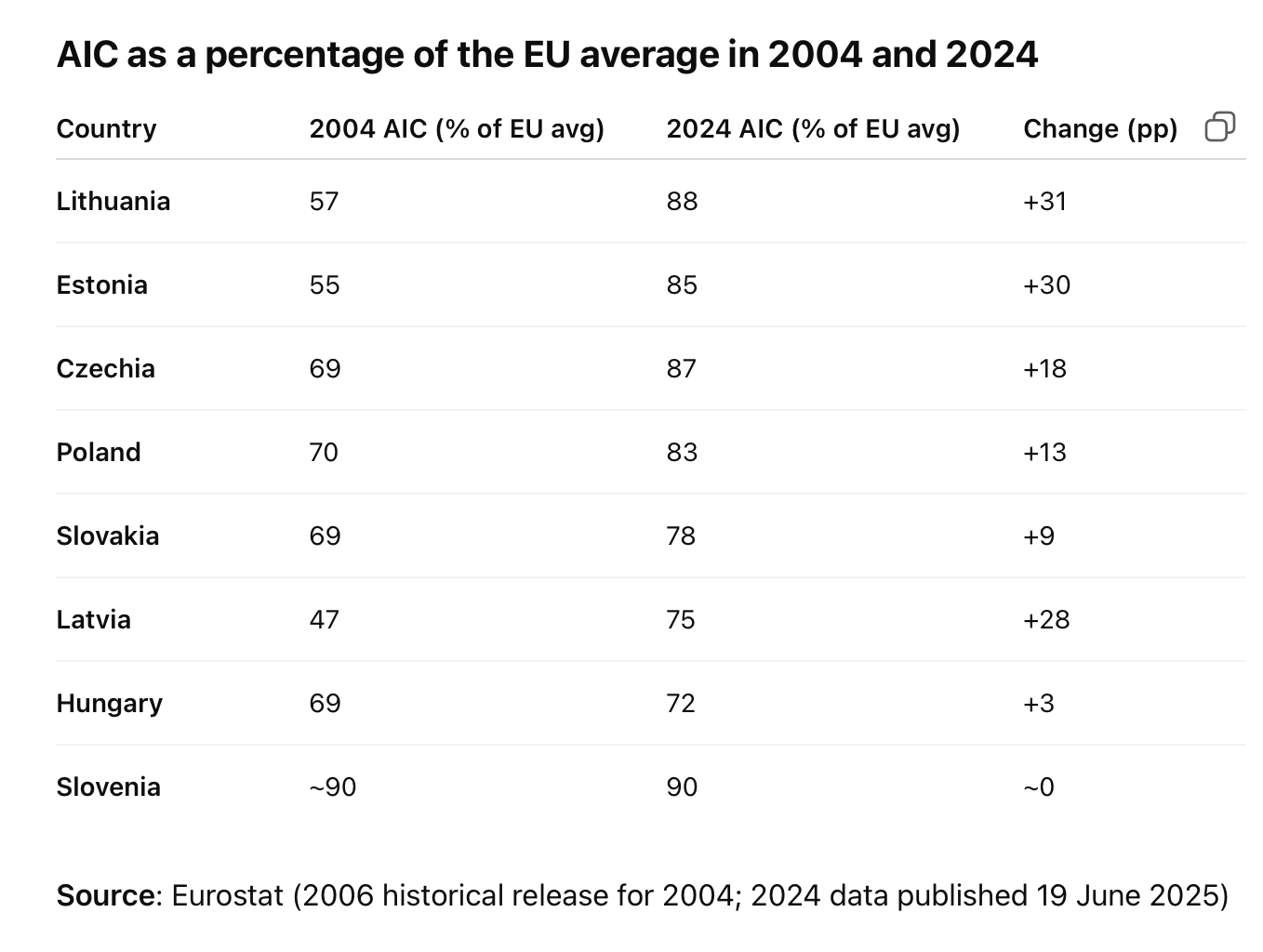
Baltics surge for household consumption, Hungary slumps
Lithuania recorded the highest level of household consumption per capita among Central and Eastern Europe (CEE) countries in 2024, reaching 88% of the EU average, the EU statistics office Eurostat reported on 19 June.
The result reflects a sharp rise from 2004, when the "EU-8" - i.e. Czechia, Estonia, Hungary, Latvia, Poland, Slovakia, Slovenia and Lithuania - joined the EU, and when the latter country's household consumption rate was just 57% of the EU average.
By contrast, Hungary has fallen to the lowest position in the EU for actual individual consumption (AIC), despite its starting position ahead of, or equal to, most of its CEE peers in 2004.
Lithuania, Romania, Estonia reap benefits of EU, Latvia Hungary lag
The 2024 Eurostat data signal a reshuffling of regional standings. Lithuania, Estonia and Romania are the only CET countries to improve on both AIC and GDP per capita relative to the EU average. Hungary and Latvia posted the largest relative declines.
Slovenia and Czechia remain the region’s most advanced economies in household terms. The Slovenian Statistical Office said on 18 June that the latest figures reflect “income convergence and the broad effects of eurozone membership”.
Baltics diverge from CEE peers
AIC per capita, adjusted to local price levels, compares household welfare across EU member states. The latest Eurostat release shows growing divergence among the EU‑8 countries that joined in 2004. Lithuania, Estonia and Latvia posted the largest gains over the past 20 years. Hungary recorded the smallest increase of any of the EU‑8 countries.
Lithuania’s AIC rose 31 percentage points from 2004-24, followed by Estonia with 30 points and Latvia with 28. Estonia’s AIC reached 85%, with gross domestic product (GDP) per capita at 87%. Czechia and Slovenia remained the strongest performers, both with AIC levels near or above 87%.
Bulgaria, which joined the EU in 2007, increased its AIC from 37% in 2004 to 70% in 2024, overtaking Hungary for the first time. Hungary’s AIC rose just three points in the same period, leaving it last in the EU for individual consumption.

Romanian, Bulgarian gains outpace Hungary
Romania, which also joined the EU in 2007, matched Hungary at 72% AIC in 2024 but recorded stronger private consumption and wage growth.
The Romanian Finance Ministry said on 20 June that the figures “reflect clear progress in household welfare linked to stable macroeconomic management.” In May, the Romanian National Institute of Statistics reported a 15% year-on-year increase in net wages.
Orban model questioned by opposition MPs
Hungary’s GDP per capita stood at 77% of the EU average in 2024, but household consumption remains disconnected from output. The Hungarian Central Statistical Office (KSH) reported on 13 June that food prices rose 23% between 2022 and 2024, while real wages remained flat. This inflationary pressure has eroded disposable income, contributing to Hungary’s decoupling of GDP and household welfare.
“Hungary is unique among its peer economies in seeing GDP growth outpacing household consumption,” according to a report released by Hungarian economic research unit the Institute for Economic Research (GKI) on 19 June.
The Hungarian Prime Minister’s Office did not respond directly to the data, but state news agency MTI reported that “household resilience remains strong thanks to targeted energy support and family tax measures", on 19 June.
Hungarian opposition MPs in Budapest cited Eurostat's AIC data as evidence of economic failure under Hungarian Prime Minister Viktor Orban. Democratic Coalition MP Bernadett Bakos said in Parliament on 20 June that “being last in the EU for real consumption reflects the cost of propaganda-driven economics”.
